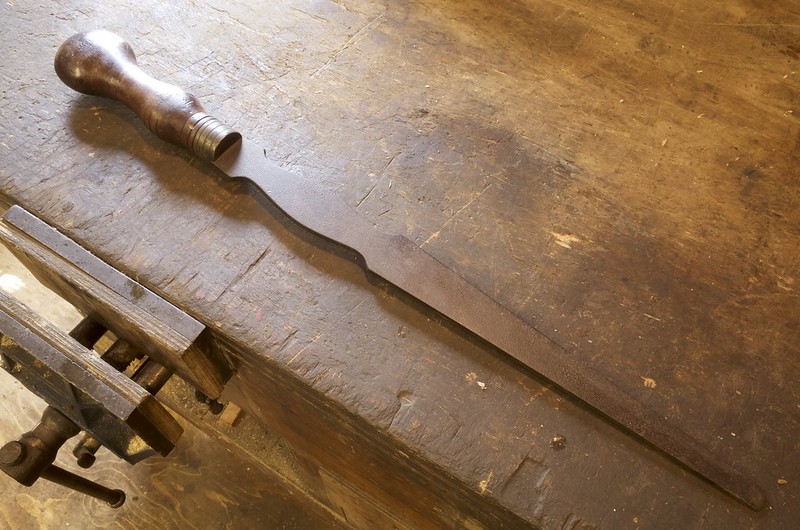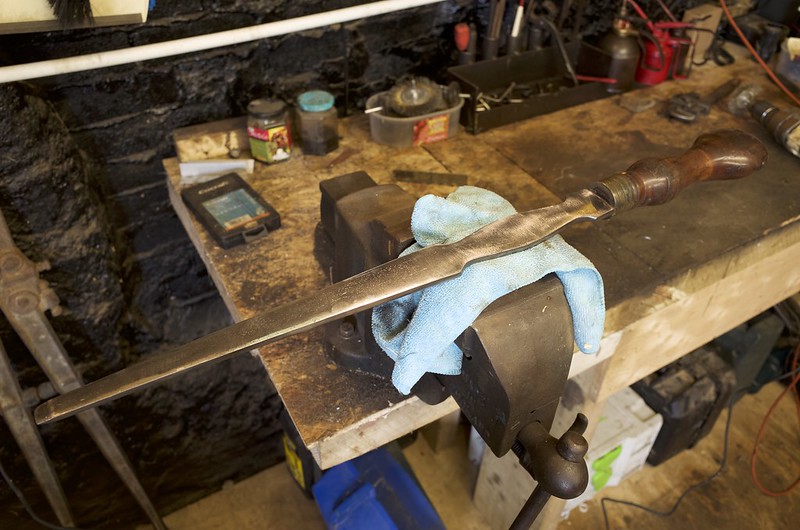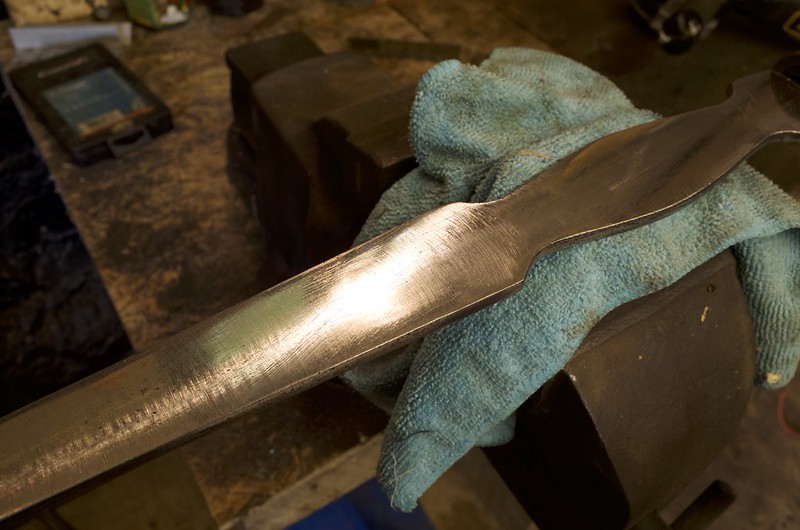Rhyolith
Established Member
This is a 28 1/2" long turnscrew that so far remains the longest single piece screwdriver I have ever seen. There is no makers name on the blade, there are some remnants of words on the handle which I have not spent time trying to discern yet. The handle is lovely, compose of unknown dark knotted wood that is very smooth.
 Giant Screwdriver (prior to restoration) by Rhyolith, on Flickr
Giant Screwdriver (prior to restoration) by Rhyolith, on Flickr
I want to make the metal parts look better as they are all covered in muck an rust.
Have started with an angle grinder using 100p paper to carefully grind the rust off the blade and my usual drill mounted wire brush for the ferrule.
After Grinding:
 Giant Screwdriver After Grinding by Rhyolith, on Flickr
Giant Screwdriver After Grinding by Rhyolith, on Flickr
Other Side:
 Giant Screwdriver After Grinding (other side) by Rhyolith, on Flickr
Giant Screwdriver After Grinding (other side) by Rhyolith, on Flickr
I have not ground it down very much and am contemplating whether to leave it with some pitting and dings in it or go for a completely mirror finish by removing them entirely... thoughts?
 Giant Screwdriver After Grinding (close up) by Rhyolith, on Flickr
Giant Screwdriver After Grinding (close up) by Rhyolith, on Flickr
There are lots of little scratches left by the grinder as you would expect and I know from the pumps that my 600p wet and dry leaves a worse finish than than that (though that was on brass). So I am after advice on the best way to proceed once I am happy with the level of grinding. Should I just get some finer paper or something else? Please only cheap options. I have polishing wheels for the final finish, so what I want is a way to get rid of all the little sanding scratches.
 Giant Screwdriver (prior to restoration) by Rhyolith, on Flickr
Giant Screwdriver (prior to restoration) by Rhyolith, on FlickrI want to make the metal parts look better as they are all covered in muck an rust.
Have started with an angle grinder using 100p paper to carefully grind the rust off the blade and my usual drill mounted wire brush for the ferrule.
After Grinding:
 Giant Screwdriver After Grinding by Rhyolith, on Flickr
Giant Screwdriver After Grinding by Rhyolith, on FlickrOther Side:
 Giant Screwdriver After Grinding (other side) by Rhyolith, on Flickr
Giant Screwdriver After Grinding (other side) by Rhyolith, on FlickrI have not ground it down very much and am contemplating whether to leave it with some pitting and dings in it or go for a completely mirror finish by removing them entirely... thoughts?
 Giant Screwdriver After Grinding (close up) by Rhyolith, on Flickr
Giant Screwdriver After Grinding (close up) by Rhyolith, on FlickrThere are lots of little scratches left by the grinder as you would expect and I know from the pumps that my 600p wet and dry leaves a worse finish than than that (though that was on brass). So I am after advice on the best way to proceed once I am happy with the level of grinding. Should I just get some finer paper or something else? Please only cheap options. I have polishing wheels for the final finish, so what I want is a way to get rid of all the little sanding scratches.
































